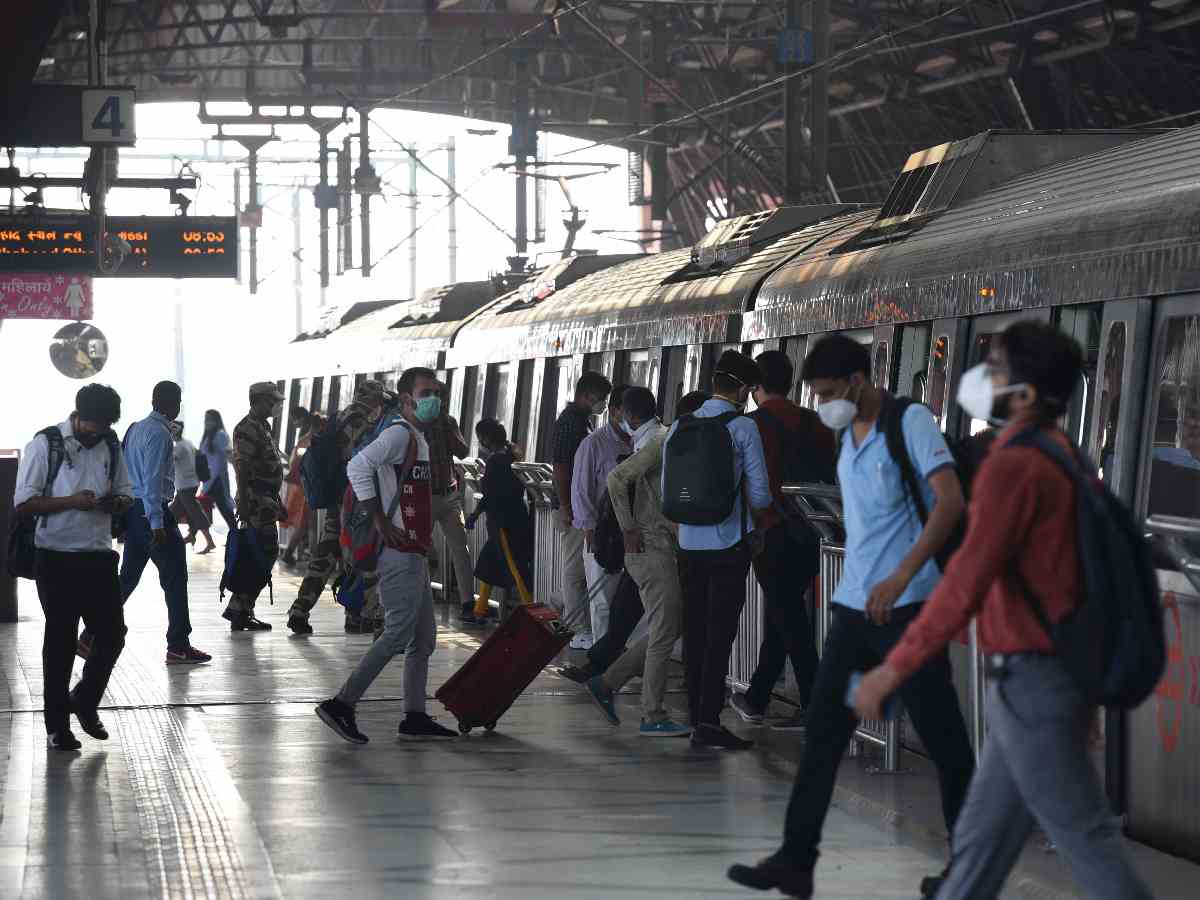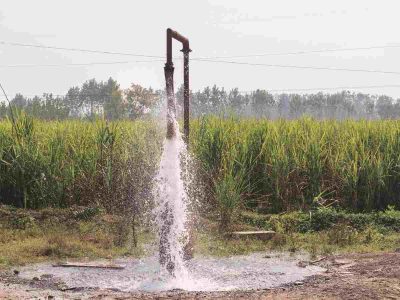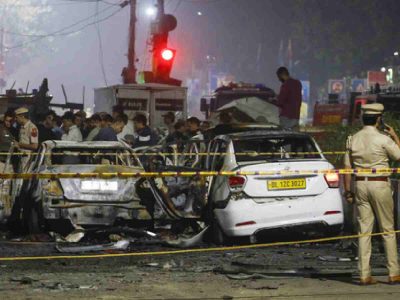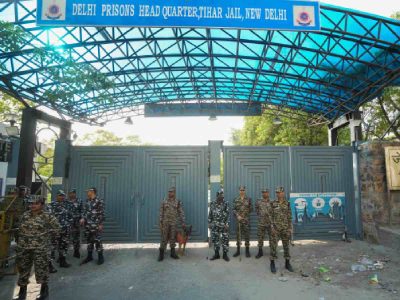Delhi: A thick layer of smog has shrouded Delhi since November 13, with the Air Quality Index (AQI) consistently exceeding 400, pinning the city into a chokehold.
On November 18, the AQI breached the unimaginable 1,500 mark in multiple areas in the Capital, prompting the enforcement of Stage IV of the Graded Response Action Plan (GRAP), which is the highest emergency response and allows the imposition of the most stringent curbs on construction work and vehicular emissions, a primary contributor to pollution.
Earlier on November 14, when the AQI was around 400, the authorities were compelled to enforce GRAP III measures and impose stringent curbs, especially over vehicular emissions.
After a high-level meeting with the concerned authorities to ensure the strict implementation of the guidelines notified under GRAP III, Delhi Environment Minister Gopal Rai had announced, “Several key decisions were taken during the meeting. The first of these was the introduction of 106 shuttle bus services by the DTC. These buses will run 1,844 trips, with 40 bus services specifically for government employees living throughout Delhi. The aim is to reduce private vehicle use and lower pollution. The shuttle services will connect various colonies, including Dwarka, Nehru Place, and the CGO Complex, and will serve offices in areas such as Badarpur, Janakpuri, and Paharganj.”
While the Delhi Metro Rail Corporation (DMRC) has responded by increasing the frequency of its trains to accommodate the rising demand for public transport, the Delhi Transport Corporation (DTC) has struggled to enhance bus services due to operational constraints.
DTC faces challenges
However, sources at the DTC claimed that they have not increased the frequency of buses or introduced any additional buses on any of the routes in Delhi, as required under GRAP, due to the limited fleet and persistent traffic congestion in the city.
According to sources in the DTC: “The DTC has not increased the trips of buses as no new buses were inducted into the fleet of the transport corporation. Apart from that, due to the long traffic jams, the buses currently plying on the roads face several hardships in completing their designated trips. So, there is no scope for increasing bus trips in the city.”
Also Read: Delhi’s Toxic Air: 1 in 3 children suffer from respiratory illness, nebulizer sales soar amid crisis
Nonetheless, DTC officials reported a rise in bus ridership, with an average of 26 lakh passengers daily in November, up from 25 lakh earlier. Women passengers increased from eight lakh to 8.5 lakh.
DMRC steps in
In contrast, the DMRC has implemented measures to accommodate the surge in public transport demand.
Speaking to Patriot, Anuj Dayal, Principal Executive Director, DMRC, said: “During GRAP II, Delhi Metro started 40 more additional trips across all the lines in the city to promote the use of public transport instead of private vehicles, aiming to curb vehicular pollution in Delhi, which is a major contributor to the capital’s pollution.”
“The metro corporation is now running 60 additional metro trips on weekdays across all the lines. When GRAP Stage III or higher is enforced, 20 extra trips are added to the fleet of 40 additional trains running on the busiest lines across the national capital, including the Blue Line, Yellow Line, and Red Line,” he added.
Ridership trends
The Delhi Metro has emerged as the primary transit system, offering a reliable, eco-friendly alternative for millions of commuters. The ridership data accessed by Patriot after the invocation of GRAP from October 13, 2024, to November 13, 2024, reflects this shift, with notable peaks during GRAP’s enforcement.
Ridership during this time showed a steady upward trend, particularly on weekdays when the impact of GRAP measures was more pronounced. On October 14, 2024, the Delhi Metro recorded its highest ridership, exceeding 7.6 million passengers. This coincided with the Diwali festive season and the early implementation of GRAP measures. Similarly, October 16 and October 17 saw ridership figures remaining above 7.3 million, underlining the increasing dependence on public transport amid rising pollution levels.
An analysis of ridership across metro lines highlights that the Yellow Line (Line 2), which connects key commercial hubs such as Connaught Place and Gurgaon, consistently attracted the highest number of passengers, often surpassing 2 million daily. The Blue Line (Line 3), linking densely populated areas like Noida, Vaishali, and Dwarka, followed with ridership frequently exceeding 1.5 million. Together, these two lines form the core of Delhi Metro’s network, catering primarily to office-goers and students—a demographic heavily influenced by GRAP-related restrictions on private vehicles. The Pink Line (Line 7) and Violet Line (Line 6) also recorded noticeable growth, with daily ridership figures ranging between 500,000 and 750,000, as they connect outlying residential areas to major transit hubs.
Weekend ridership, while lower than weekdays, still demonstrated the metro’s significance as a reliable travel option. On October 28, 2024, a Saturday, ridership remained strong at over 6.6 million, while October 29, a Sunday, saw approximately 5.9 million passengers. These figures illustrate the metro’s role in facilitating leisure travel and shopping trips, particularly as GRAP discourages the use of personal vehicles even on weekends.
Also Read: Delhi pollution | Artificial rain, smog towers a waste of public funds: Experts
The Airport Metro Express Line (AMEL) also recorded consistent growth, with daily ridership figures ranging from 50,000 to 80,000 passengers. The GRAP restrictions on polluting vehicles near the airport likely incentivised travellers to use this high-speed service for both convenience and compliance. While its overall contribution to the total metro ridership remains modest, the AMEL plays a crucial role in connecting central Delhi with the airport, underlining its strategic importance.
“Delhi Metro urges the public to embrace public transport to alleviate road congestion as well as minimise air pollution. With increased travel during this time of the year, using public transport can significantly contribute to a cleaner environment besides being cost-effective, convenient, and stress-free,” Principal Executive Director Dayal said.





